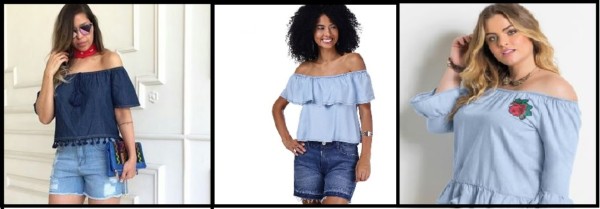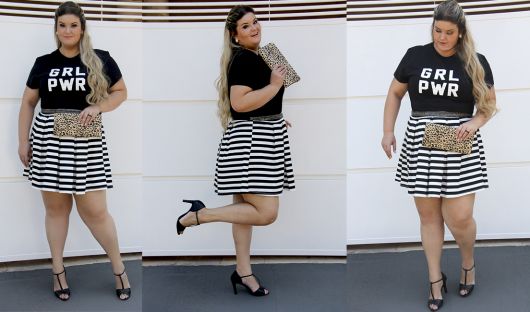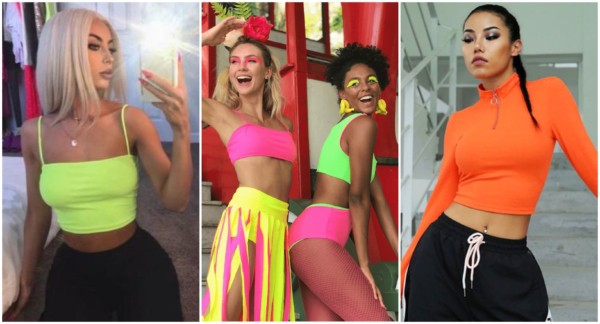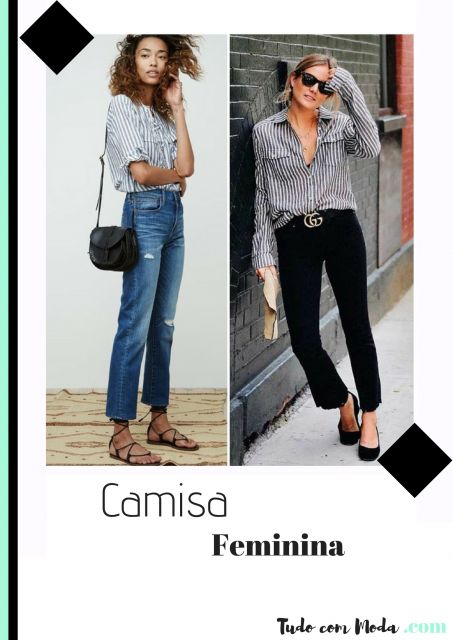And there's no need to justify why you don't use your natural strands, everyone has the right to have the hair they want, but always safely to maintain the liveliness of the strands and their health.
And when we get to the subject of straightened hair, the famous and well-known progressive brush appears again, which is still a technique widely used in salons.
However, despite being much commented on, this type of straightening still raises many doubts, and therefore, before adopting the technique of straightening the strands, it is necessary to have all the answers to your doubts, in order to choose the healthiest way. of straightening.
To help, we've gathered all the frequently asked questions about the progressive brush, and we're going to unravel what is myth and truth when it comes to this type of straightening.
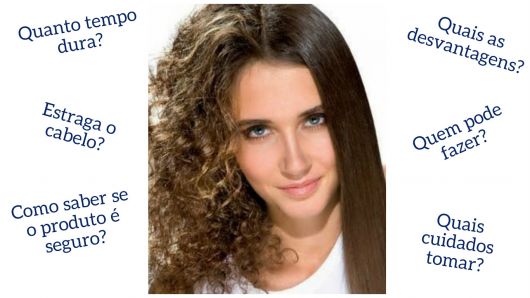
What is Progressive Brush?
The term progressive brush refers to a series of smoothing treatments (strawberry, chocolate, Moroccan brush, among others), and defines a type of straightening that happens progressively, that is, with the repetition of the method, the hair becomes more and more smooth.
In general, the progressive brush is composed of a smoothing substance and a cream that brings other effects, such as hydration; and it is this cream that differentiates one treatment from another and the differentiation of the names.
The progressive straightening treatment affects the structure of the hair, leaving the locks smooth and frizz-free. However, the used product will come out with the washes and the wires will lose their smoother characteristic.
A common mistake among straightening techniques is to confuse progressive with permanent brush, and with a brief explanation it is possible to differentiate between these two terms and techniques:
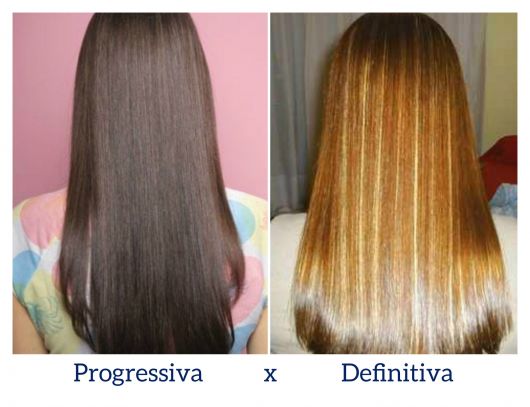
- Progressive: as we've already said, progressive is a gradual technique that loses its most intense effect with washes.
- Definitive: this type of treatment acts more intensely on the strands and changes the structures, leaving the hair completely straight the first time the technique is applied. The procedure does not wash out and the retouching must always be done at the root to keep up with the smooth effect of the locks.
Advantages and disadvantages
Advantages
- Straightening: there is no doubt that those who adhere to the procedure are looking to leave their hair straight, and this is the main advantage of the technique. Different types of hair – wavy, curly, curly – can use the technique and the smooth effect is the great result.
- Decreased frizz: those who suffer from frizz that love to stand up can bet on the progressive as a way to lower those stubborn hairs.
- Decreases volume: for those who don't have very curly or curly hair, but suffer from excessive volume, the progressive brush is a great treatment to leave the strands lower and with a smooth effect, especially when the weather is humid and the strands come back gaining volume.
- Practicality: for those who are adept at using straight strands, the procedure can be a more practical bet for everyday life, as it does not require the constant use of a hairdryer and flat iron to lower the volume and leave the hair straight.
- Temporary: progressive straightening is a temporary straightening technique (lasts between 3 and 6 months), which comes off as you wash. Despite leaving, it is an advantage for those who want to reverse the process and return with natural locks.
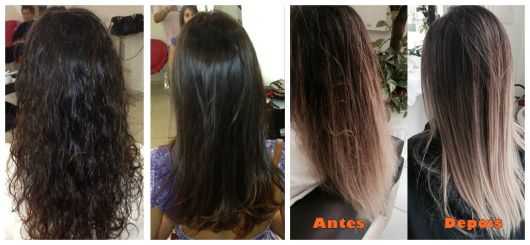
Disadvantages
- Unnatural smooth: despite being widely used, the progressive brush technique does not give the strands a natural smooth appearance. On the contrary, the hair loses some of its natural movement and the ends become straighter, making it more difficult to model.
- Possible scalp allergies: for those who have a sensitive scalp, the technique can be very harmful, as it can cause allergies and even scalp peeling. In that case, it is recommended to do the strand test first to check for possible allergies.
- It damages the hair: initially the progressive has the power to hydrate, but as it is a procedure that requires repetitions, the chemicals used can damage the strands over time and this can be seen at the ends of the hair, which become thinner and thinner. thin.
Tips and Frequently Asked Questions About Progressiva
Who is it for? Indications and Contraindications
The progressive brush is a very widespread technique, but it is not suitable for any type of hair.
In general, afro hair has more difficulty adhering to the treatment, and in this case, don't expect the promise of straight hair. Therefore, the progressive is more suitable for those with wavy, curly and curled strands and with volume.
In terms of contraindications, the smoothing technique should not be performed by pregnant or lactating women. And any other chemical procedure must first be communicated to your doctor.
One truth in the contraindications is for virgin hair, which does not adhere so well to straightening, because the strands do not have cracks caused by other chemicals and the strands absorb less of the product, leaving the result less effective.
For those who face respiratory and allergic problems, including scalp sensitivity, the technique is also contraindicated, as it can aggravate irritation and even make it difficult to breathe during the procedure, which usually has a more pronounced odor.
Another type of hair that should not be subjected to the progressive brush procedure is elongated hair, such as megahair. Using products on these strands can damage added hair and even loosen strands that have been trapped. If you want to straighten and extend the strands, the tip is to do the straightening first and then do the stretching.
Which professional to use?
When it comes to chemically straightening your hair, completely forget the idea of straightening it at home or calling a friend to help you.
The progressive technique should only be performed by specialized professionals who have taken courses in the area, so that they know how to deal with any incident during the procedure.
In addition to going to a professional with experience, also look for someone who has recommendations from close friends who have already performed the technique, so you can analyze how the result turned out.
How it works?
The process for the progressive brush starts with the use of a deep cleaning shampoo, which acts by opening the capillary scales for the penetration of the smoothing products.
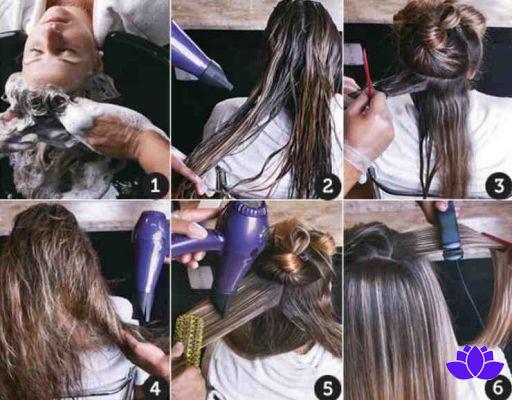
With the scales already open, the product applied acts on the internal strands and fibers of the strands, breaking the sulfur bonds in the strands and leaving a hardening layer inside the hair, which leaves the hair smooth and taut, in addition to reducing the volume. .
In this sulfur breakdown, the wires suffer and so does the natural keratin, and this reflects on the possible breakage of the wires after the progressive treatment.
How long does it last?
Progressive is a gradual process that affects the structure of the hair, but comes out with washing.
On average, a progressive lasts around 3 months, and after that time you may need to help with a hairdryer and flat iron to have a smooth effect on the root, which begins to appear, and on the strands that start to become wavy again. .
How to Know if the Used Product is Safe?
For those who want to adhere to the progressive brush procedure, but are afraid of using an unsafe technique or product, here are some essential tips:
- Check which product will be used on your hair: when consulting with the hairdresser to schedule an appointment and even do the strand test, ask which product he will use and ask to check the packaging. Research whether the product is released and registered at Anvisa and if not, it is better not to risk it.
- Do not accept unpackaged products from the manufacturer: despite all guidelines and regulations, there are salons that “manufacture” their own straightening products or buy them from third parties; with mixtures that can be incompatible and cause serious damage to the hair and its health. In this case, it is also necessary to pay attention if the product is legal, and in the case of packages without labels, it is better to be suspicious.
- Be wary of adding other products: some establishments break the rule of not using formaldehyde and add more of the product to the straightener, as a straightening intensifier. If you notice this addition by the professional, ask what product he is adding.
- Strand test: after checking all the previous tips and feeling safe, it's time to do the strand test. At that moment, check if the product is really safe by analyzing whether or not there is breakage or damage to the wires, and if there is an excessive smell of formaldehyde.
Are There Alternatives to Formaldehyde?
Yes, there are alternatives to formaldehyde, and with the great advantage of acting on the hair without damaging it.
To replace formaldehyde and give the locks a smooth look, there are two options – Ammonium Thioglycolate and Ethalonamine. These substances are close to ammonia, but with greater smoothing power.
Unlike the progressive brush with formaldehyde, which acts by breaking the chains and fibers of the threads, these substances do not remove molecules from the threads and only confuse the strands and fibers to add a new identity – straight hair. The result is smooth, undamaged hair.
In addition to the chemical options for straightening the strands, there is also natural straightening, which involves homemade recipes and which has less smoothing power, but which guarantees looser strands, with less volume and, mainly, hydrated.
What Precautions Are Necessary?
If you are thinking about straightening your hair with a progressive brush, there are precautions to be taken before and after the process:
previous care
- Well-groomed hair: before going through a chemical process, intensify the hair care process, moisturize and avoid excessive chemicals.
- Lock test: this care is already very close to the moment of carrying out the procedure, but it cannot be forgotten in any way. Days before carrying out the procedure on all hair, schedule a test on a strand to assess whether the strands are suitable for the procedure.
Aftercare
Post-straightening care is grouped into care to moisturize the strands and tips to increase the duration of the progressive brush.
- Avoid deep cleaning shampoo: to increase the duration of the progressive, avoid products that act more deeply on the wires, as they eliminate the smoothing product faster.
- Don't tie the hair after the process: avoid trapping and marking the strands with hair accessories for at least a week after the process, and this will prevent the hair from getting a mark in the middle of the straight effect.
- Hydration: the progressive brush has a high power to smooth, but not to treat the strands, so after doing the chemical procedure, bet on hydration to have smooth and well-groomed hair.
Can Damaged or Chemically Treated Hair Make Progressive?
It depends!
In the case of strands that are very damaged and fragile, it is extremely important to hydrate and treat that hair beforehand, so as not to cause a break in the locks.
After this more intensive treatment for hair recovery, go to a professional to check if the strands are ready to receive the progressive brush without any damage.
For chemically treated hair, it is first necessary to identify the chemical used. In the case of dyed hair, it is possible to do progressive; As for strands that have undergone other straightening techniques recently, the ideal is to check that there is no incompatibility with the products that have already been used and those that will be used in the progressive.
How to Know if Formaldehyde is in the Allowed Amount?
It is not possible to state categorically that there is more formaldehyde than allowed by Anvisa, 0,2%. However, it is possible to suspect if the additional professional more than the product if:
- The smell is too strong and causes headache and eye irritation;
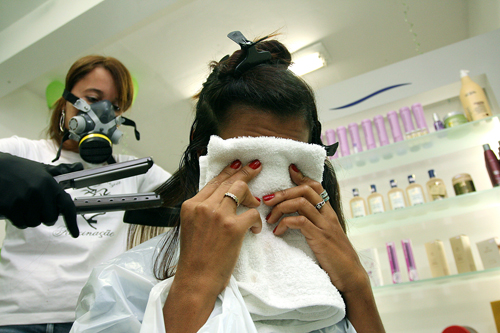
- The hair generates a lot of smoke when brushing with the dryer and ironing;
- There is the use of a fan on the client's face to send the generated smoke and odor back.
Is it possible to reverse the effects of the progressive?
If you adopted straightening as a proposal for straight hair, but got tired or didn't like the result, nowadays there are specialized treatments to reverse chemically straightened strands.
The process is based on ammonia, which acts by destroying the layer of the straightener that forms on the wires and then there is the recovery of the locks with keratin.
The process promises to return 60 to 80% of the hair's natural appearance, but the bad news is that the technique is not yet widespread.
Another possibility is to wait for time to pass and cut the strands little by little, but always keeping the hydration to recover the hair.
Photos of Hair Before and After Progressive
For those who want to see if it's worth adopting the progressive brush as a way to smooth the locks, we've separated before and after photos.
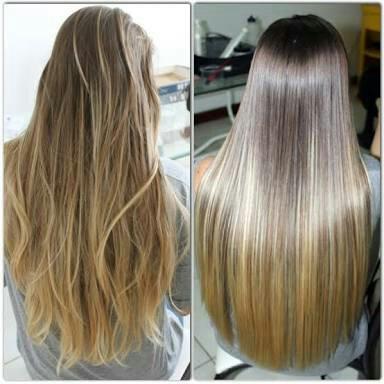
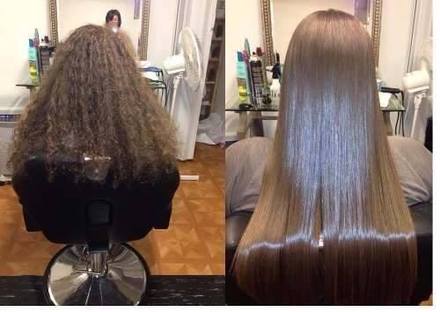
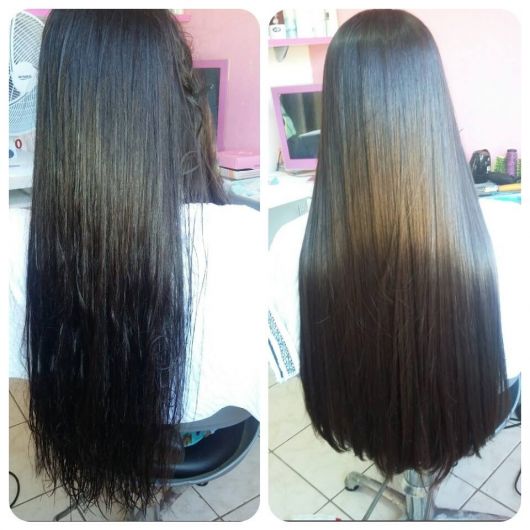
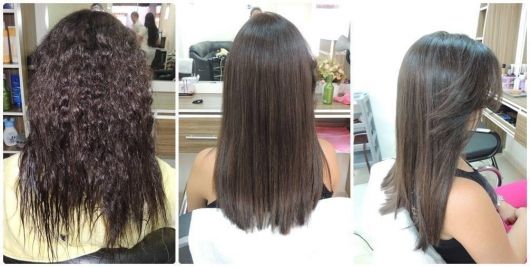
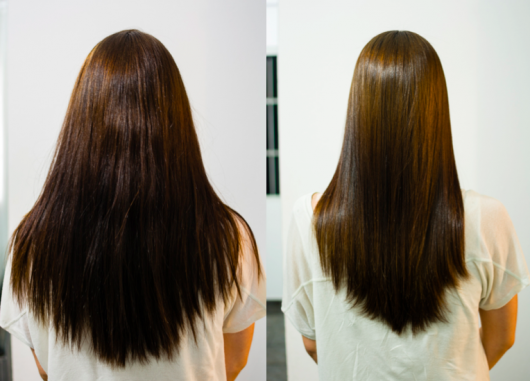
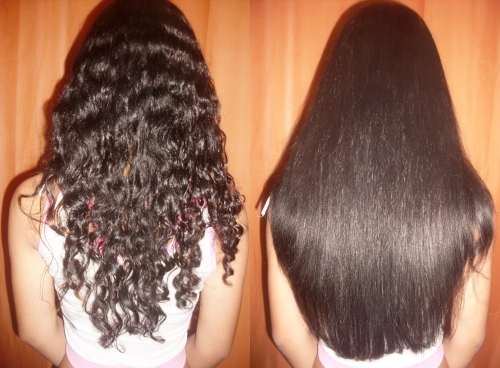
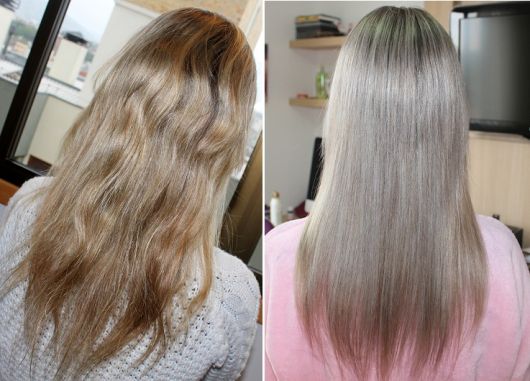
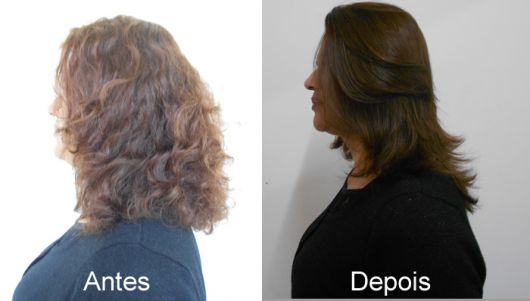
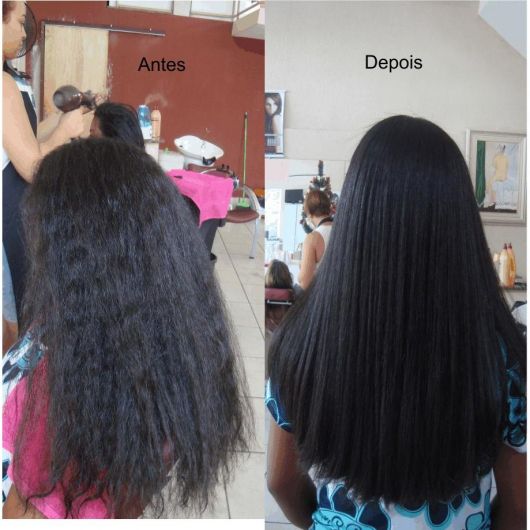
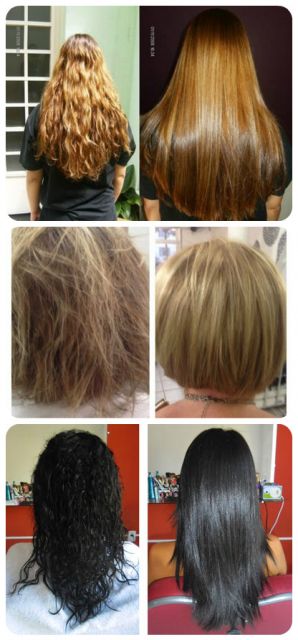
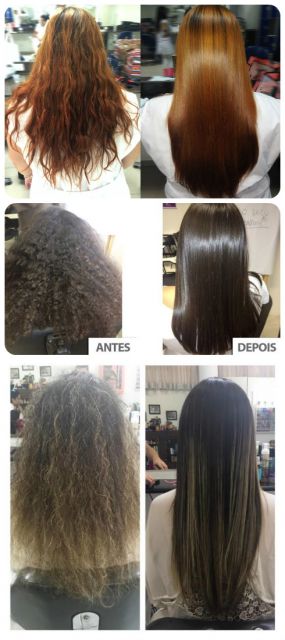
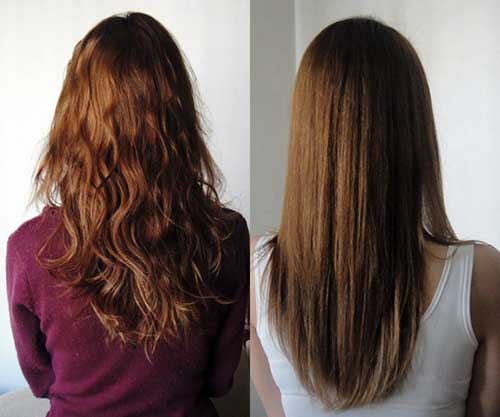
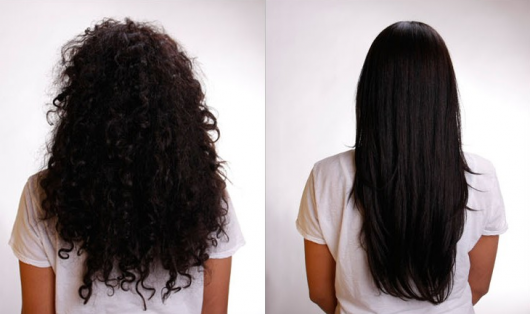
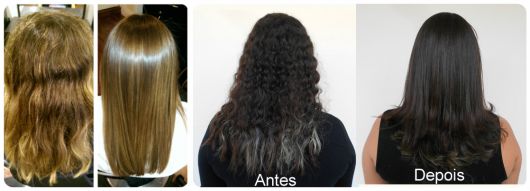
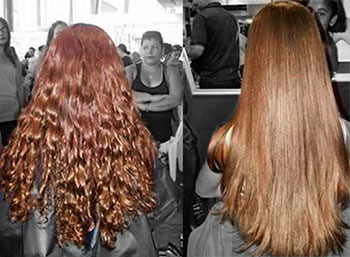
And if you want to adhere to straight hair, it's time to consider everything presented about progressive brush, so your decision will be more accurate and without doubts about the procedure that is so commonplace.









